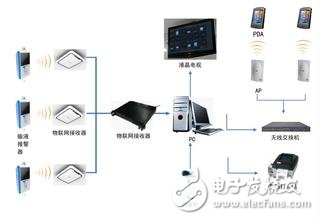If you or your loved one is currently receiving treatment, you may notice some cool new equipment to aid diagnosis and treatment. However, you may not realize that some of these devices are connected to the Internet and become an important part of the IoT ecosystem.
How do you connect MRI, CT scanners or laboratory test equipment to improve patient care in this way? Here are three advantages:

1. Reduce equipment downtime through remote monitoring and support
IoT devices can be tested and diagnosed remotely. For example, a technician can connect from his own office and analyze why the MRI failed. Technicians can identify the root cause of the problem and use the knowledge management application to find answers to frequently asked questions. Technicians can also remotely connect to hospital technicians to provide hands-on support. When the root cause of the problem is determined, a new part can be replaced by a guide or replaced by a resident engineer.
Varian Medical Systems saw a 50% reduction in the average repair time for their connected devices. Through remote resolution, Varian's service cost per problem was reduced by $2,000, and technology dispatch worldwide was reduced by 20%. Elekta also saw significant results in providing immediate expert advice and “shoulder support†to customers, such as the Elekta Radiation Oncology Machine.
2. Actively supplement before the demand for materials
When the critical operating components are exhausted, the medical devices that connect the IoT can report back to the "supply ship." For example, the strontium content in the MRI needs to be monitored to ensure proper operation of the equipment. By using the IoT connection device, the resident engineer can be sent to the hospital before the NMR level is depleted, avoiding machine downtime and rearranging the patient.
Laboratory equipment operations require specific chemicals and compounds; connected smart devices enable real-time monitoring, tracking and response. Loss information can trigger an alarm and automatically replenish during a supply-limited downtime, which increases patient and care satisfaction. Abbott’s implementation is a way to monitor system parameters through the cloud and instantly replenish consumables.
3. Effectively dispatching by changing the utilization rate to serve more patients
At a conference with several hospital CIOs, I saw a recurring theme: "These machines are too expensive and management is inefficient." Machine utilization is not always available, when available You also need to collect data manually. IoT medical devices can provide daily utilization statistics for patients for proper utilization scheduling.
For example, if an MRI is only 20% utilised and oversubscribed in another location, the doctor can redistribute the patient to use other off-peak scanners. Data can be imported into a cloud computing scheduling application or it can contain periodic maintenance information. Or, if the level of sputum in an MRI is low, you can arrange a technician to plan maintenance activities, reschedule affected patients, and perform inventory/asset management functions while tracking them through cloud applications.
1-3HP Compressor Series Sealed Terminal Blocks
1-3Hp Compressor Series Sealed Terminal Blocks,Refrigerator Compressor Sealing Terminal,Ice Machine Compressor Sealing Terminal,Mini Compressor Feedthroughs For Wine Cabinet
Shenzhen Capitol Micro-Electronics Co.,LTD , https://www.capitolgtms.com
